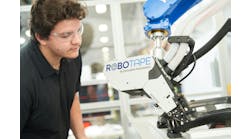Modbus TCP/IP is a communication protocol widely used in industrial automation, especially for controls engineers involved in building machinery for factories or plants.
Jason Haldeman, a senior product specialist at Phoenix Contact USA, emphasized the simplicity of Modbus TCP/IP – which is rooted in its basic messaging structure developed by Modicon in 1979 – in an article from partner publication Automation World.
The protocol's design includes an IP address, function code, and data registers, making it easy to implement and produce software drivers for various programming environments. This simplicity leads to lower development and hardware costs, as users can connect devices with standard PC Ethernet cards without the need for expensive, special chipsets.
Modbus TCP/IP's benefits extend beyond simplicity, encompassing openness, compatibility with the existing Modbus installed base and support for emerging technologies such as the Industrial Internet of Things (IIoT).
To learn more about Modbus TCP/IP, read the full article from Automation World.




